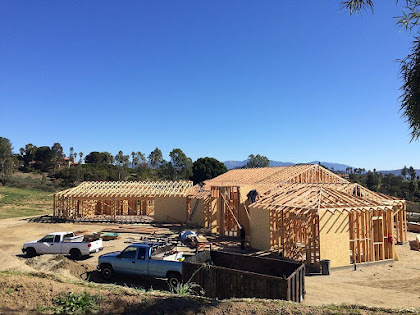Basic Truss Vocabulary
If you are looking for a roof truss company in San Diego, the chances are good that you already know that using trusses can save you time and money on your building project. However, unless you are a contractor or builder, you may not be aware of the basic facts about trusses, the vocabulary used to describe them, or the terms that are commonly used in the industry by Roof Truss Manufacturers in San Diego and elsewhere. Here are some basic truss vocabulary terms to help you understand what builders mean when they talk about truss roofing.
●
Chord.
The chords are the outer pieces of wood that form the frame for the
truss. Most of these frames are some
form of a triangle, although there are other shapes that are used in various
types of decorative roofing.
●
Parallel chords. Parallel chord trusses are used for floor
trusses or flat roof applications and have top and bottom chords that run
parallel to each other.
●
Pitched chords. Pitched chord trusses have out chords that
sit at angles to each other and form triangles or other shapes.
●
Webs.
The webs or webbing of a truss are the pieces of wood that connect the
chords. In some trusses, the webs are
very minimal and simple; in others they are numerous and elaborate.
●
Connectors. The connectors are the fasteners that hold
together the members or elements of the trusses. In most applications, wooden trusses are held
together with toothed metal connectors that are hammered into place. These are very strong and resist slipping or
falling out, creating sturdy trusses that will last for many years.
●
Structural load. Trusses are built to withstand a tremendous
amount of pressure from the top and sides.
In fact, one reason trusses are so popular is they deflect a huge amount
of load when compared to single, stick-built rafters. This makes truss roofs incredibly
durable. Structural load is the term
used to apply to the downward or twisting forces that cause wooden rafters to
bend or break under certain conditions, such as high winds or weight from heavy
roofing materials.
●
Sheathing. Sheathing refers to the material placed on
top of the trusses, such as plywood.
Depending on the type of roof, sheathing may be made of several types of
material. However, the most common
applications are plywood sheets that are nailed or screwed into place on the
trusses, then covered with some other material such as shingles or metal.
● Pitch or slope. The pitch or slope of a roof refers to the angle it makes in relation to the center point. Most roofs in southern California have a relatively low pitch or slope, since snow loads are not typically an issue. However, in mountainous areas or in other places where snow may occur, roofs are often pitched much more steeply.
As one of the leading truss manufacturers in San
Diego, Stone Truss
has spent many years working with builders and contractors to provide quality
products and professional service for home and business construction. We work with your clients to ensure that they
have everything they need to maximize the efficiency and minimize the cost of
any building project. Give us a call
today to discuss your needs and learn more about how we can help!



Comments
Post a Comment